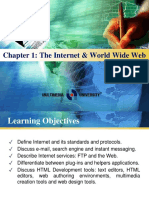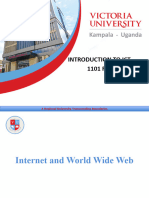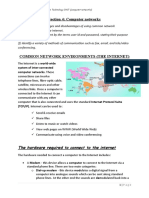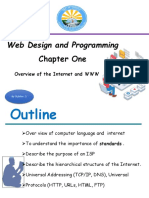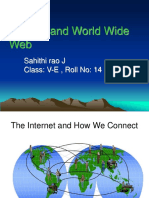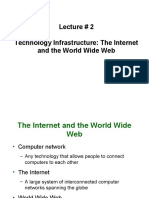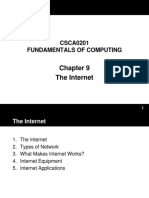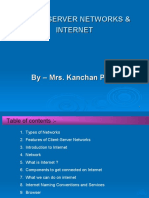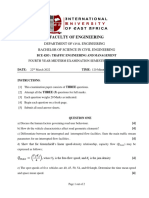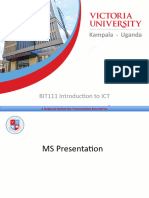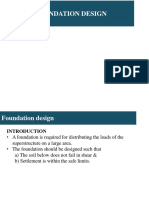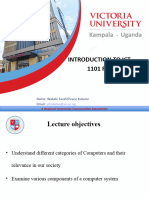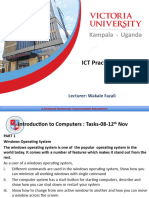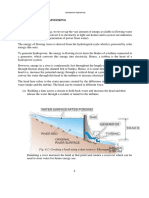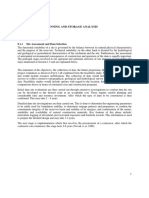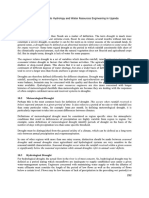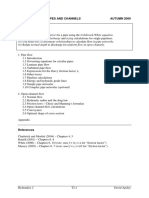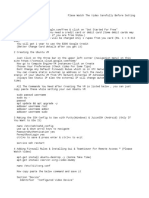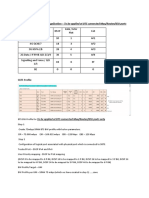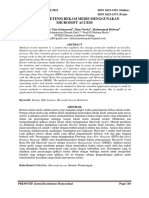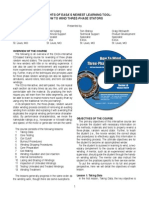0% found this document useful (0 votes)
100 views33 pagesInternet and Web
The document provides an overview of the internet and web, including definitions of key terms like internet, TCP, IP, advantages and disadvantages of the internet and networking, search engines, the difference between the web and internet, TCP/IP, FTP, HTTP, client and server model, IP addresses, internet service providers, navigating the web using browsers, web sites and URLs.
Uploaded by
Delina TedrosCopyright
© © All Rights Reserved
We take content rights seriously. If you suspect this is your content, claim it here.
Available Formats
Download as PPTX, PDF, TXT or read online on Scribd
0% found this document useful (0 votes)
100 views33 pagesInternet and Web
The document provides an overview of the internet and web, including definitions of key terms like internet, TCP, IP, advantages and disadvantages of the internet and networking, search engines, the difference between the web and internet, TCP/IP, FTP, HTTP, client and server model, IP addresses, internet service providers, navigating the web using browsers, web sites and URLs.
Uploaded by
Delina TedrosCopyright
© © All Rights Reserved
We take content rights seriously. If you suspect this is your content, claim it here.
Available Formats
Download as PPTX, PDF, TXT or read online on Scribd
/ 33


